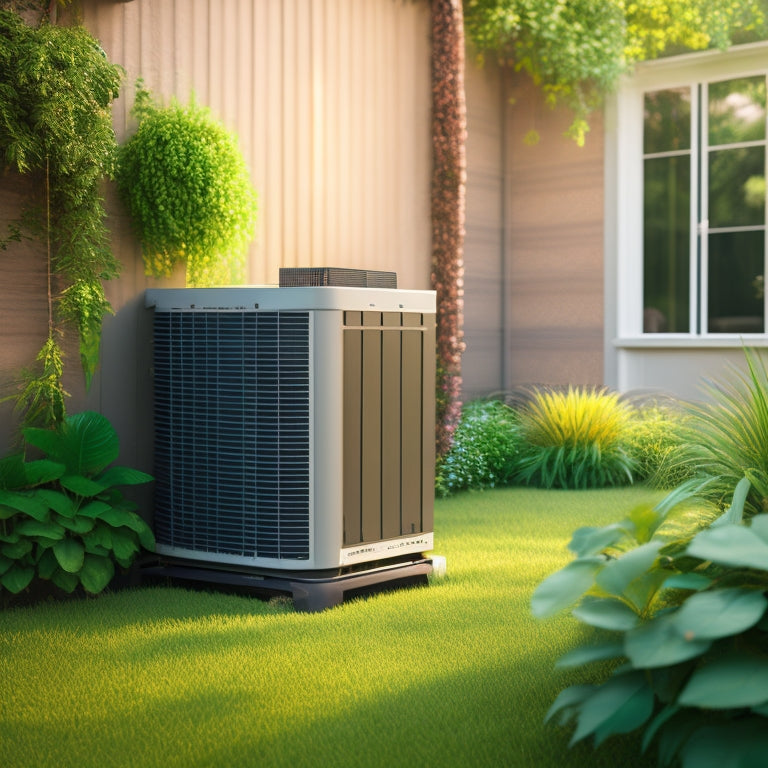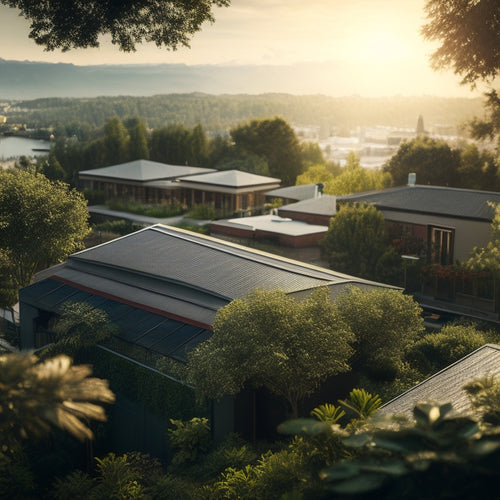
3 Tips to Maximize Your Ground Source Heat Pump's Longevity
Share
To maximize your ground source heat pump's longevity, you'll want to prioritize regular maintenance, including filter replacements, system cleanings, and descaling to prevent airflow restrictions and corrosion. Next, ascertain your system is properly sized and designed for your unique heating and cooling demands, and consider energy storage solutions to optimize efficiency. Finally, regularly monitor your system's performance metrics, detecting deviations from peak operation and making adjustments to configuration, filters, or antifreeze mixture as needed. By following these tips, you'll be well on your way to extending your system's lifespan, and there's still more to investigate to get the most out of your investment.
Key Takeaways
- Regular maintenance, including filter replacement and system cleaning, prevents corrosion and scaling, ensuring efficient operation and extending lifespan.
- Proper system sizing and design, including energy storage solutions, reduces the risk of costly repairs and replacements, and optimizes energy efficiency.
- Monitoring performance metrics, such as temperature and flow rates, detects issues early, allowing for timely adjustments and preventing wear on the system.
- Descaling the heat exchanger every 6-12 months maintains efficiency and prevents premature system failure, reducing energy bills and repair costs.
- Annual inspections and cleanings of pipes and fittings prevent buildup, ensuring optimal system performance and longevity.
Regular Maintenance Is Key
Your ground source heat pump's longevity hinges on a rigorous maintenance schedule. You must prioritize filter replacement, as clogged filters restrict airflow and increase energy consumption.
Regularly inspect and clean the air filters, replacing them every 1-3 months, depending on usage and environmental conditions. Additionally, system cleaning is vital to prevent corrosion and scaling.
Consider the benefits of solar-powered systems, which can lead to potential annual savings of $500 to $2,000+. You should descale the heat pump's heat exchanger every 6-12 months, and clean the system's pipes and fittings annually.
Failing to perform these tasks can lead to reduced efficiency, increased energy bills, and premature system failure. By staying on top of maintenance, you'll guarantee your ground source heat pump operates at peak performance, providing you with a reliable and cost-effective heating solution.
Optimize System Sizing and Design
Properly sizing and designing your ground source heat pump system is vital to its overall performance and longevity. When you get it right, you'll enjoy efficient operation and maximize your system's lifespan.
A properly sized system guarantees that your heat pump can handle your home's heating and cooling demands without overworking, which can lead to premature wear and tear. It's important to work with a qualified installer who can assess your home's unique needs and design a system that meets those needs.
Additionally, considering the importance of energy storage and management can also impact the system's efficiency, as a well-designed system can optimize energy usage and reduce waste.
A well-designed system will also guarantee proper installation, which is essential for efficient operation. By optimizing your system's size and design, you'll be able to reap the benefits of a ground source heat pump while minimizing the risk of costly repairs and replacements down the line.
Monitor and Adjust Performance
Regular monitoring and adjustments are vital to secure your ground source heat pump system operates within ideal parameters. You must keep a close eye on performance metrics, such as temperature, flow rates, and energy output, to identify potential issues before they become major problems.
Conduct regular performance monitoring to detect any deviations from peak operation. This is especially significant when considering the importance of renewable energy sources in reducing carbon footprint.
Additionally, integrating sustainable practices, such as those found in eco-friendly charging stations, can further enhance the overall efficiency of your system. Make efficiency adjustments as needed to guarantee the system runs smoothly and efficiently.
This might involve tweaking the system's configuration, cleaning or replacing filters, or adjusting the antifreeze mixture. By staying on top of performance monitoring and making timely adjustments, you'll prevent premature wear, reduce energy consumption, and extend the lifespan of your ground source heat pump.
Frequently Asked Questions
Can Ground Source Heat Pumps Be Installed in Small Backyards?
You can successfully install a ground source heat pump in a small backyard, leveraging advanced installation techniques that optimize backyard space, such as vertical or horizontal loop configurations, ensuring efficient energy harvesting.
Are Ground Source Heat Pumps Compatible With Radiant Floor Heating?
As you envision a warm, cozy haven, know that ground source heat pumps harmoniously pair with radiant floor heating, releasing exceptional energy efficiency and liberating you from high energy bills, while also providing a comfortable, consistent warmth that envelops your entire space.
Can I Use a Ground Source Heat Pump for Cooling in Summer?
You can indeed use a ground source heat pump for cooling in summer, leveraging its energy efficiency to provide chilled water for radiant floor cooling; however, a specialized installation process is required to optimize its performance in reverse mode.
How Long Does It Take to Recoup the Cost of a GSHP System?
When you're "in the black," you're profiting, and with a GSHP system, you'll break even in 5-10 years, depending on installation costs and energy savings, which can be substantial, giving you the freedom to enjoy long-term financial benefits.
Can Ground Source Heat Pumps Be Used in Cold Climates Like Alaska?
You can successfully install a ground source heat pump in cold climates like Alaska, but it's essential to take into account cold climate performance and specific installation considerations, such as larger loop sizes and antifreeze solutions, to guarantee peak efficiency.
Related Posts
-

Why Choose Cool Roofs in Scorching Climates?
You opt for cool roofs in scorching climates because they enable you to reclaim control over your energy consumption ...
-

Why Biodegradable Dish Soap Matters for Earth-Conscious Homes
You likely don't realize that the dish soap you're using today will still be harming the environment long after you'v...
-

Why Choose Solar Composting Toilets for Your Home?
By choosing a solar composting toilet for your home, you'll greatly reduce your environmental impact, slashing your w...


